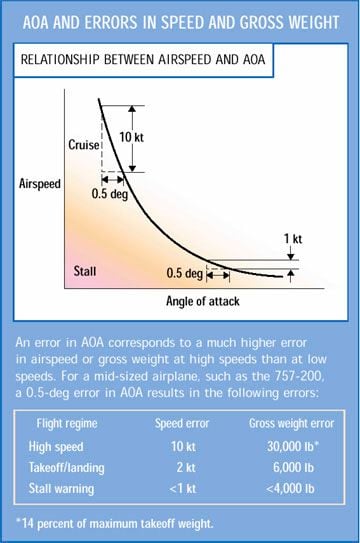All these known issues with AoA sensors....from Boeing themselves Aero-12:
Stall warning devices have been mounted on the wing, but most modern commercial jet airplanes have movable leading edges that would interfere with such an installation. Most have the sensor located on the fuselage, far ahead of the wing, reducing the effect of changes in lift and configuration. Nearer to the nose of the airplane, the airflow is relatively clean and the boundary layer is thin, minimizing the required probe height.
Even at the nose, many factors can affect the relationship between the local AOA and true wing AOA (fig. 9). The angle of airflow around the nose is not the same as at the wing.
Also, the sensitivity to changes in AOA is greater, so a 1-deg change in true wing AOA causes a local flow change at the nose of 1.5 to 2 deg.
The trailing-edge flap position has an influence on a typical AOA sensor calibration, as has landing gear position (in particular, that of the nose landing gear doors).
Mach number affects the flow around the nose and therefore changes the sensor calibration.

Pitching the airplane can cause erroneous readings at the sensor. While the nose is pitching up (as in a turn), the local flow angle is reduced, causing the reading to be too low. Although the sensors are placed to minimize the effect of sideslip, it is not eliminated and can be quite significant at sideslip angles that may occur on short final approaches or with an engine out.
Even variations in the contour of the skin near the sensor can subtly affect the local flow angle. Many of these design challenges also affect pitot and static port installation and accuracy.
The sensor itself has potential for error. The combination of installation error, zero bias, and aerodynamic inaccuracy can total 0.5 deg or more. Contamination or damage can also affect the sensors accuracy.
For the most part, the effects discussed above can be compensated for and, depending on the airplane, many have been.
It should be noted, however, that each correction has its own inherent uncertainty and can also cause erroneous readings if the input data is incorrect.
Last edited by Smythe; 24th Mar 2019 at 02:42.